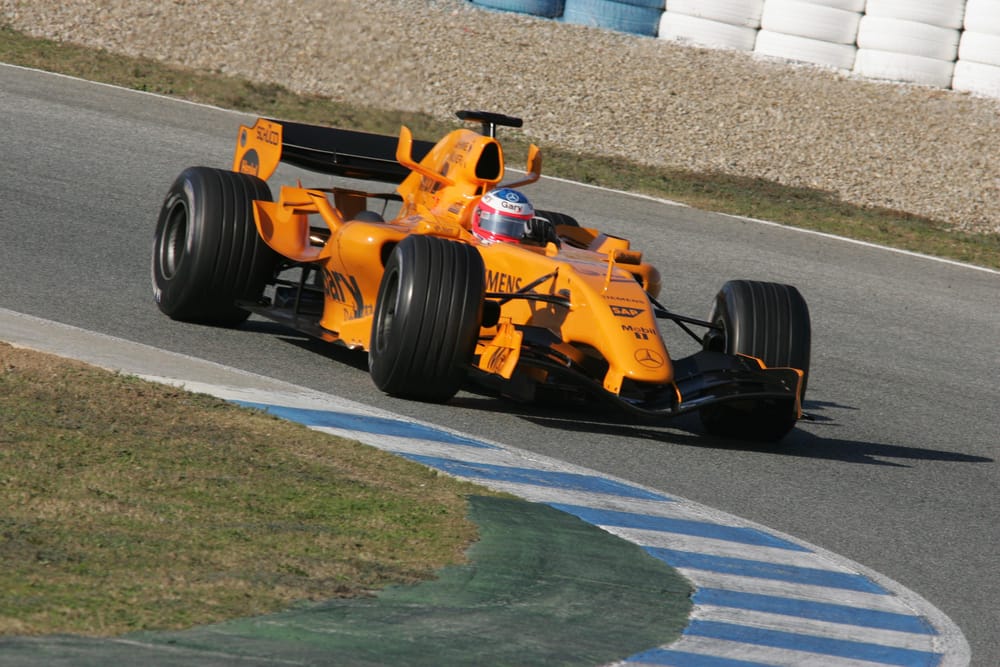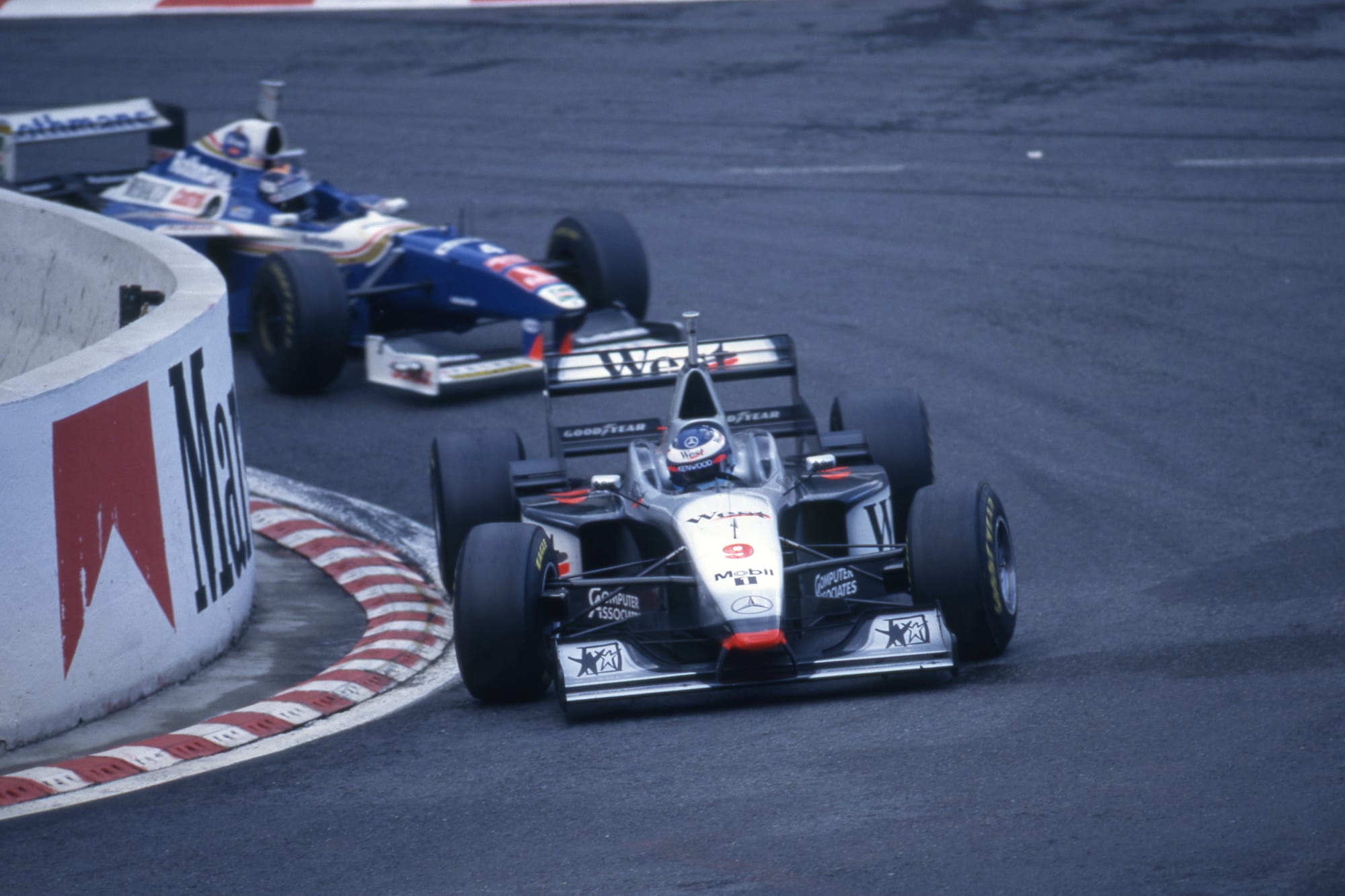This year's unique pre-season scenario of teams not being allowed to unveil their 2025 liveries before Formula 1's own F1 75 extravaganza in London on February 18 was expected to mean a load of never-to-be-raced special shakedown colour schemes would enter the pantheon of unraced F1 liveries as at least some teams banked a 'filming' day run before the big night.
But it looks like McLaren's plain/camo MCL39 livery might end up being the only one, with Williams having come up with a clever way of launching in something very close to its usual colours and any other team expected to run before Tuesday doing so behind closed doors and not releasing any imagery until their slot at the 02 event.
Unraced liveries have become rarer in the Liberty era, with teams increasingly emboldened to park their usual colours and actually race in one-off special schemes - some of which have been stunning (the full Gulf liveries, naturally), some of which have basically been complete teases (the 'blue' Ferrari). But there have still been a few that never made it onto the grid.
Back in 2020, we picked 10 unraced F1 liveries for a video and article. Inspired by this year's launch season circumstances, The Race's now rather bigger team revisited that list and shook it up a touch for a 2025 edition.
The test season Toyota
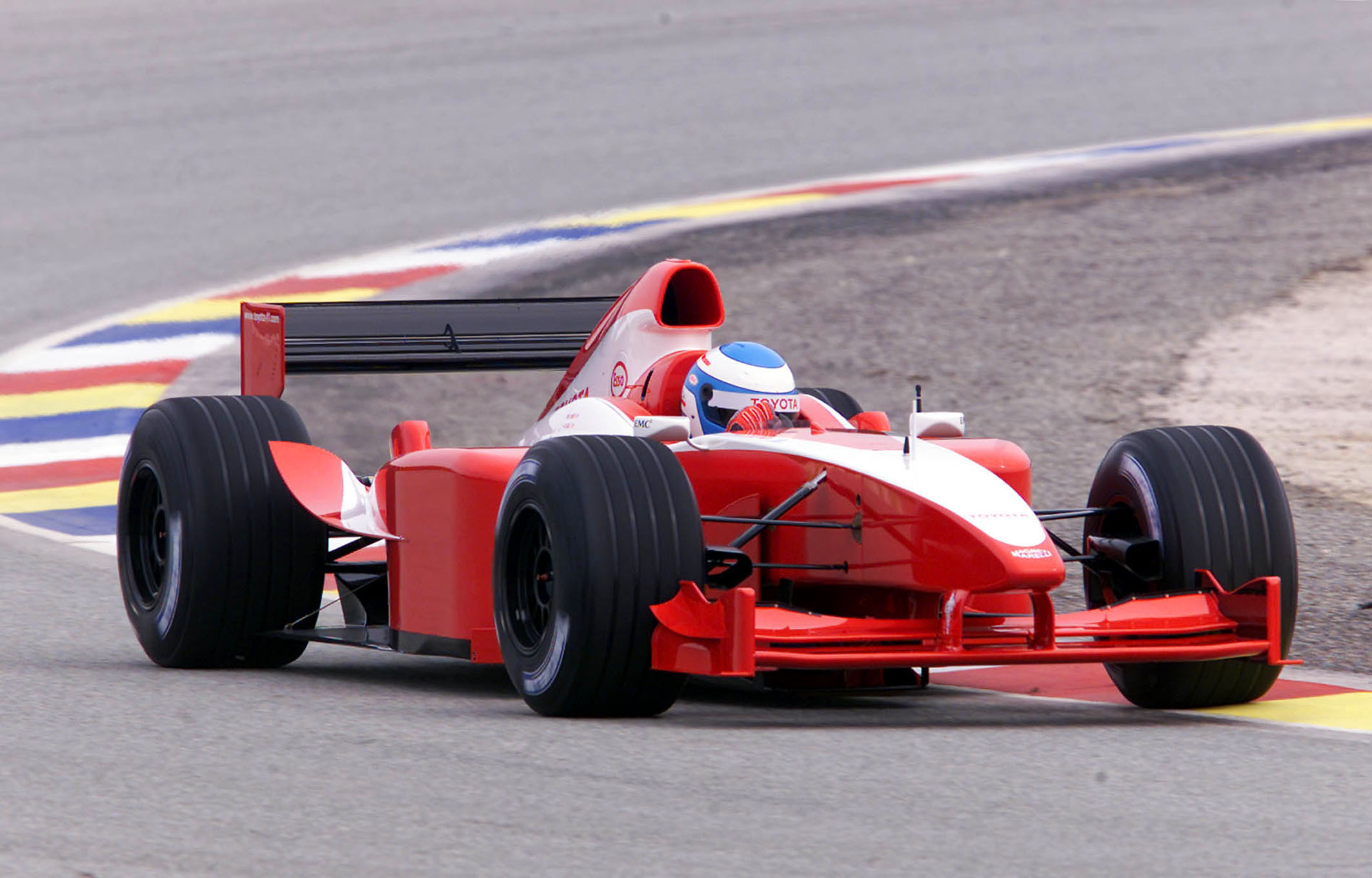
Toyota spent a whole year testing ahead of its entry into Formula 1. It had a dedicated testing facility based at Paul Ricard, and took its first car to most of the tracks on the calendar during 2001.
That year it used a clean red and white livery that showed a family resemblance to Toyota's sportscar projects of the late-1990s.
The car looked tidy but it wasn’t quick. Toyota initially struggled to get its head around how much downforce it was lacking, with senior personnel questioning why Mika Salo and Allan McNish were braking so much earlier than the other drivers in a group test – without realising that the car couldn’t handle braking any later.
When Toyota launched its race car for 2002, the livery could best be described as a white car that had been attacked by a toddler with a red paint brush.
Perhaps the team’s underperformance during its time in F1 has made us cynical. But even if the brush strokes design was unique at the time, Toyota showed a lack of imagination by keeping the same concept throughout its eight years in F1. Its test car was well and truly a one-off.
The original black Alpine

Black has been quite a theme of Alpine's F1 cars (sometimes because of weight concerns over paint), and there was another mostly black variant in use for Pirelli testing last week with an eye-catching dash of BWT pink.
Renault's all-black from pre-season testing in 2020 is a favourite with some of our team and our 2020 version of this list also gave a nod to the nearly-black very dark blue used for late-2006 testing as an interim livery before the ING title sponsorship prompted a (hideous) total revamp of the traditional Renault colours for 2007-09.
The initial livery that appeared on mock-ups in 2021 before the full Alpine launch makes this list for two reasons. Firstly, it had a decent if tenuous story behind it - a tribute to the A500 F1 prototype that started running under the Alpine banner in 1975 before the original works team became Renault for its actual F1 debut in 1977.
Secondly, since 2021 we've got reluctantly very used to carbon black heavy F1 liveries, and looking back at this one now it's extremely tidy by comparison to so many that have actually raced, with the Alpine blue/white/red kicking out very strikingly in a way that would've really stood out on the grid. It was more elegant than Alpine's actual blue race colours that year in the end.
The 'vibrant' Spyker
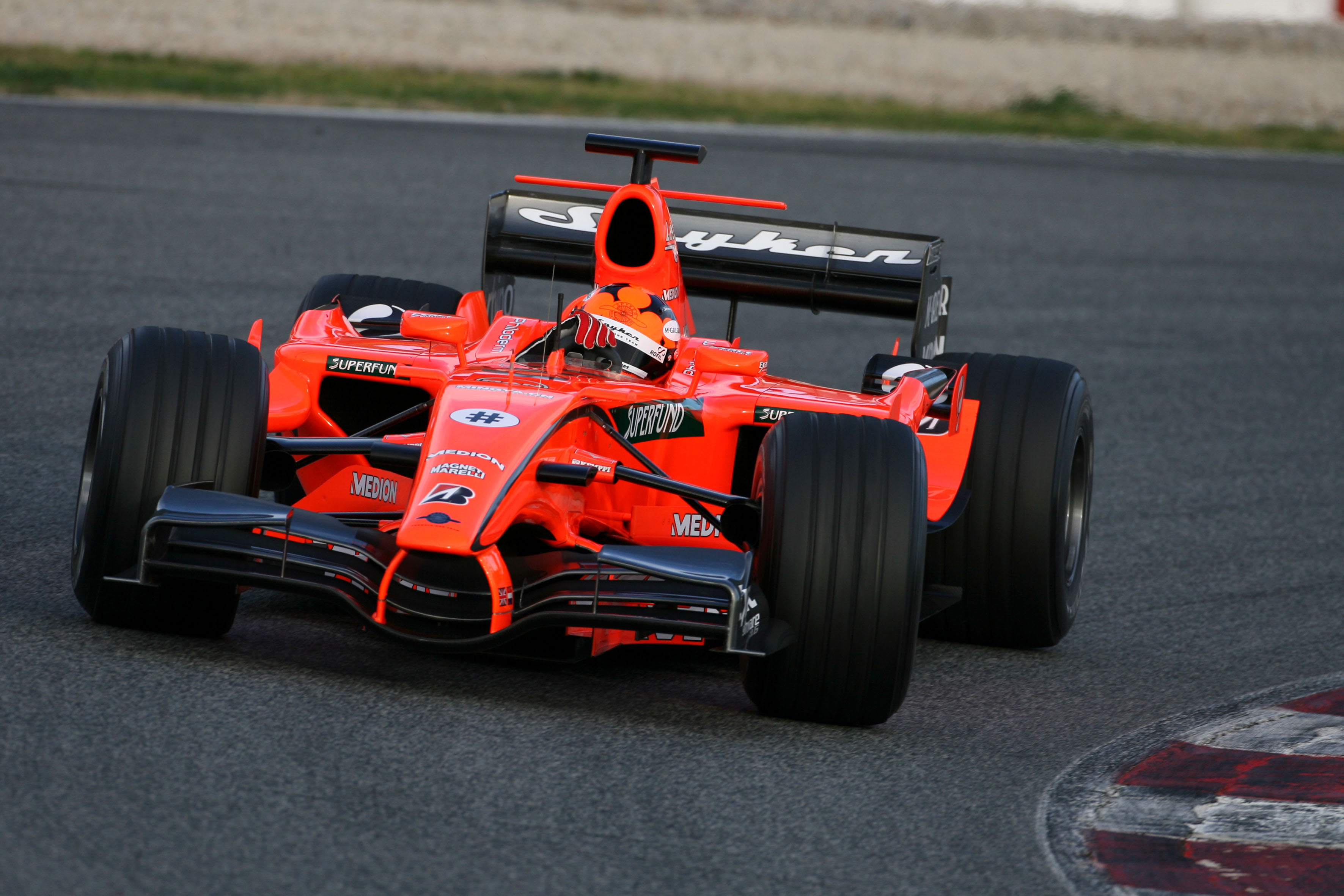
The team formerly known as Jordan went through a bit of an identity crisis in the years following Eddie Jordan selling up.
Midland was a shortlived existence that didn’t even last the entire 2006 season, with Spyker taking over late in the year and hastily rebranding the cars with a splash of orange for the final few races.
For winter testing the team switched to a bright orange that was either vibrant or vile depending on your preference.
Whatever your take on it, the car certainly stood out, although by the time the season started the orange had been toned down and paired with some grey, which was all a bit underwhelming. Much like the car’s performance on track.
'Team Silverstone' had three entries on our original 2020 unraced liveries list, with the elegant dark red and white used for testing before the launch of the full Force India branding and the so-silver-it-could've-been-a-McLaren livery used in initial 2017 test before the pink of the BWT deal came in also featured five years ago. The very bright orange Spyker stays on the list because it was just so different to anything else - has this shade actually ever been on an F1 car that raced?
The other ROKiT Williams
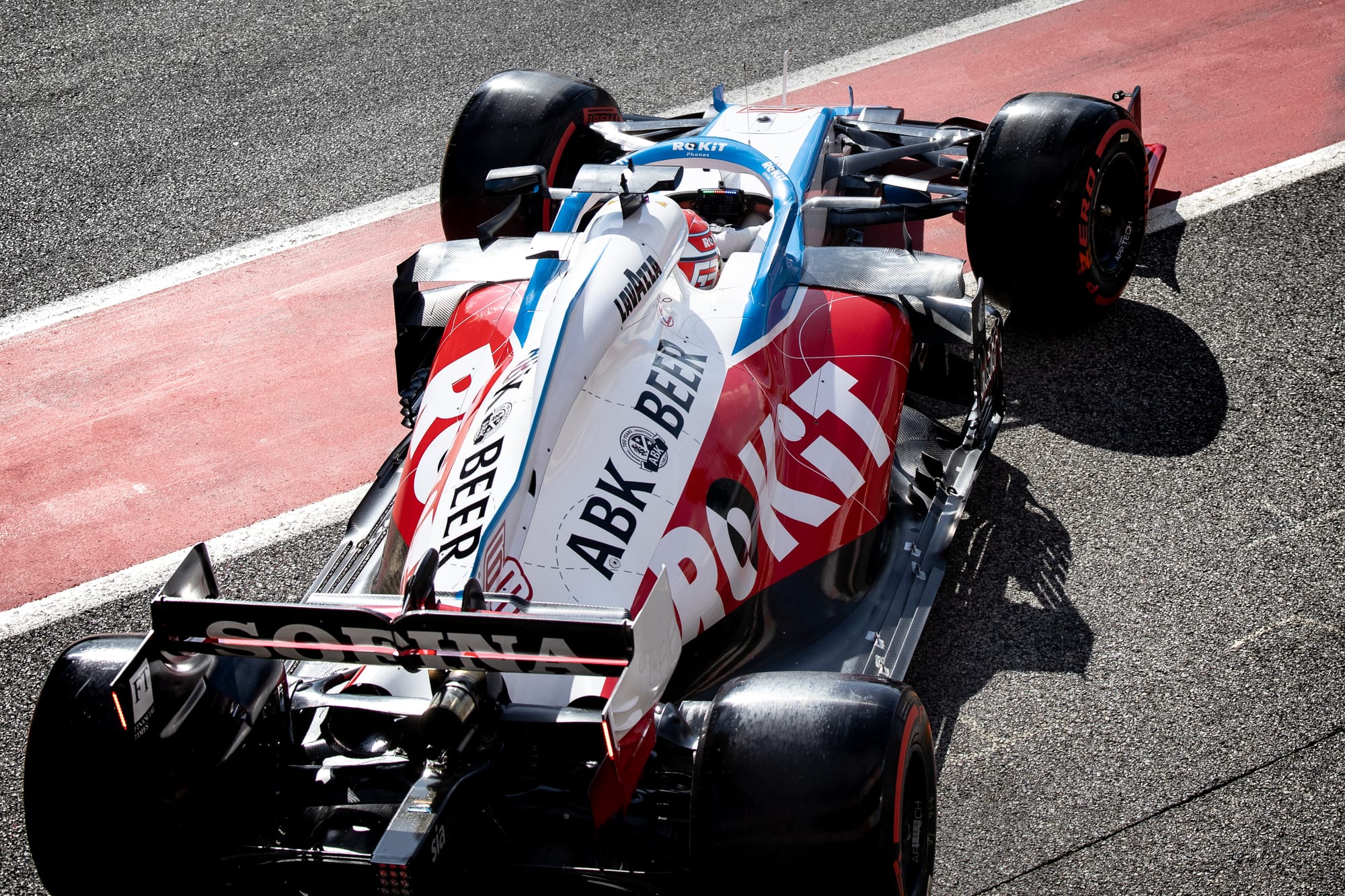
This looked too much like toothpaste in F1 car form to be considered a great lost livery, but it's strangely memorable - maybe just because red remains a surprising colour on a Williams.
The first ROKiT branded scheme of that awful 2019 season was mostly the familiar Williams theme of blue and white, and the livery the team switched to for the actual 2020 season after the ROKiT relationship collapsed during the lockdown months was more on the white side.
This version only appeared for 2020 winter tests, giving it a bit of in-house notoriety at The Race as it was Williams's pre-season livery swap that inspired our original unraced liveries video back then.
The Red Bull drinks can
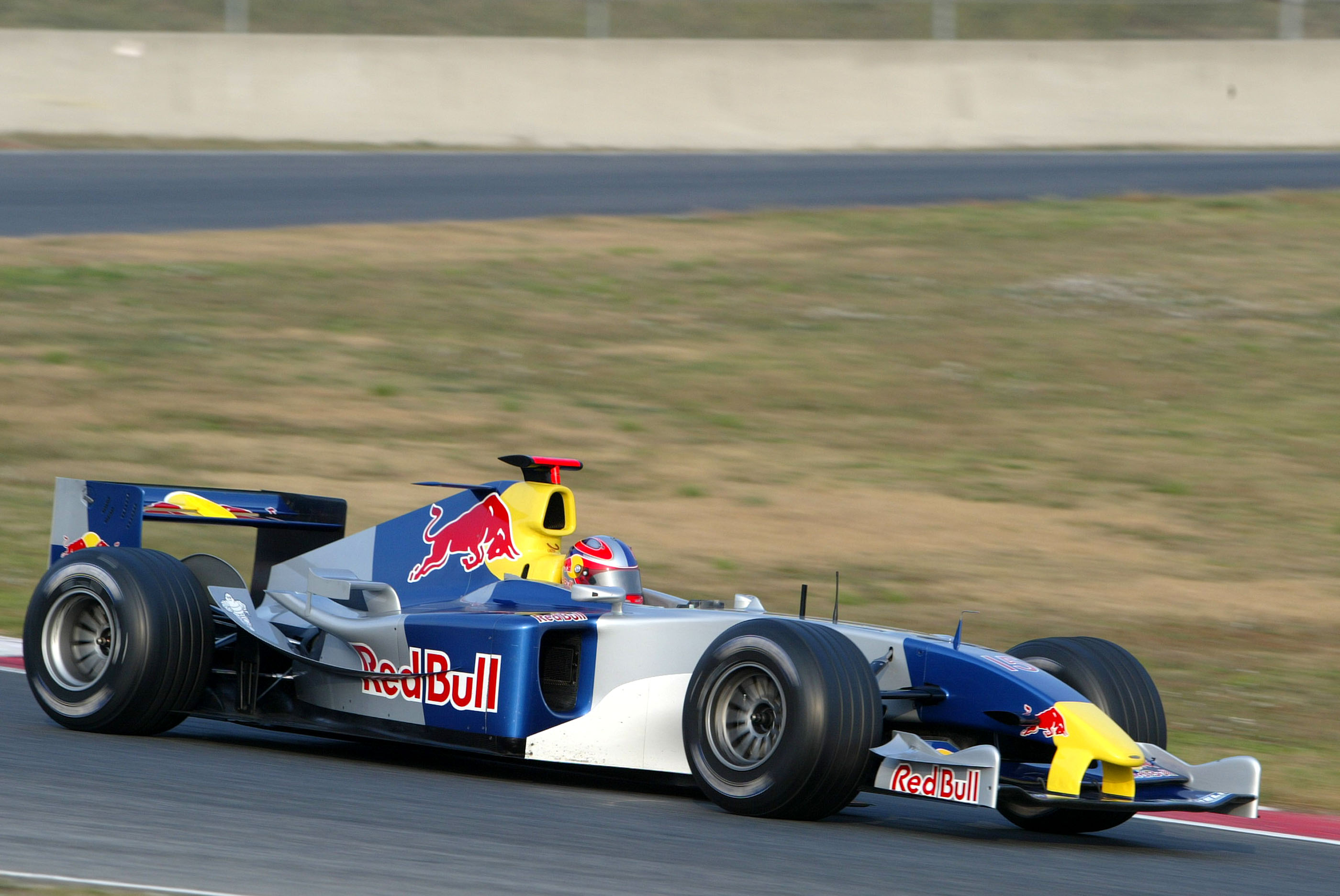
Red Bull was the title sponsor of Sauber for a long time – and even held a stake in the team for a while – before it bought Jaguar at the end of 2004.
And if it wanted to signify its shift from sponsor to fully-fledged team owner in F1 with a new identity, it had a ready-made livery change in the form of its drinks can design.
It seemed obvious, but Red Bull has never raced a car in the colours of one of its cans. The only time we’ve seen what that would look like was over the winter of 2004-05, when it hastily rebranded the Jaguars it inherited.
When its definitive 2005 car was revealed, it had a look that could be traced all the way back to the 1995 Sauber.
The orange McLaren
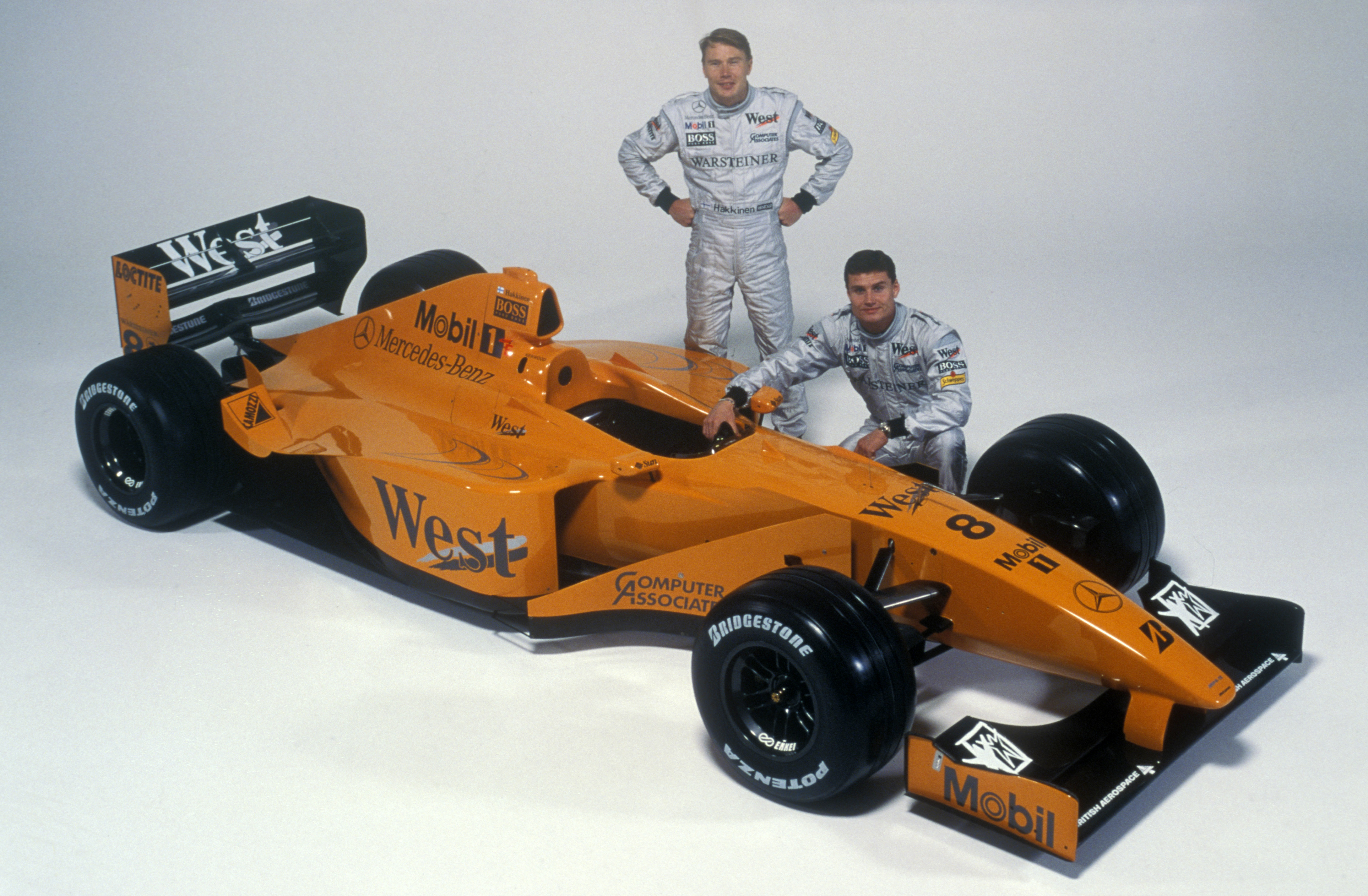
McLaren caused a stir in the late 1990s when it ran its cars in its classic orange colours during pre-season. The first time it did this, in 1997, was as an interim measure before its new silver colour scheme was unveiled at a glitzy launch in London featuring a performance by the Spice Girls.
The livery made a return in testing in 2006, where it again served as an interim design ahead of the team’s eye-catching chrome rebrand for that year.
Repeated calls for McLaren to race in orange again for the first time since the 1970s were always resisted by Ron Dennis, giving the 1997/2006 teaser cars relative legend status among unraced F1 liveries given the clamour for that colour scheme to actually race and the fact it seemed it never would.
The team’s new leadership went for it in 2017. However, its black and orange attempt for its final year with Honda was a disappointment, with Jenson Button even remarking that Fernando Alonso’s all-orange Indianapolis 500 car was the right shade of orange.
McLaren got it right a year later, ditching the black and switching to its true ‘papaya’ shade.
The BMW comeback
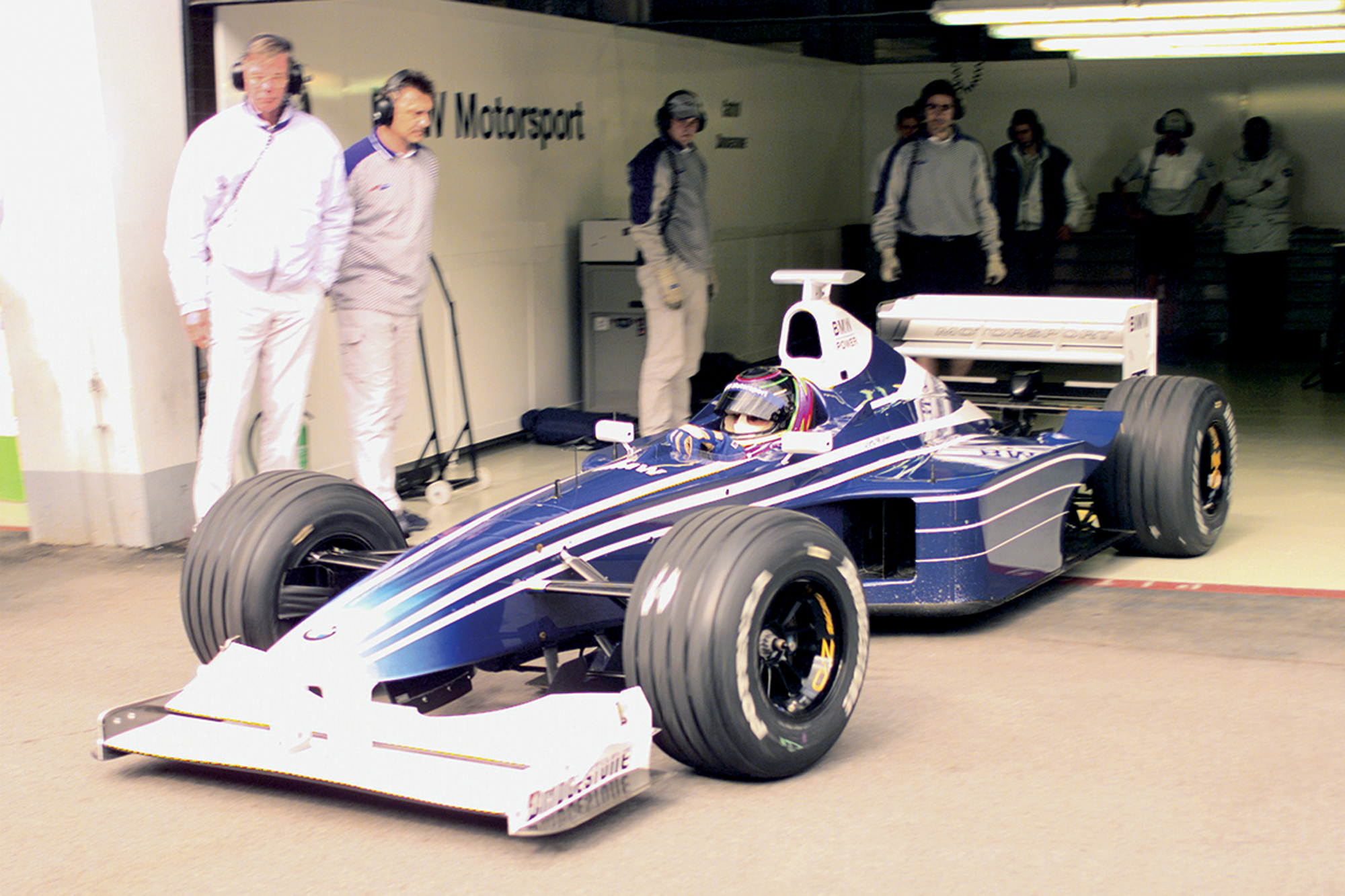
After more than a decade away BMW took its return to F1 for 2000 very seriously, initially running its development engine in a 1998 Williams test car.
Having started out with a plain white design and just a hint of BMW Motorsport branding, as things got more serious it switched to dark blue with white stripes. It was a striking design that seemed to pay homage to its successful association with Brabham in the 1980s.
BMW’s deal with Williams included control of the livery as title sponsor, although when the 2000 car was launched it featured a lot more white than the test car.
The blue camo-ish Bull
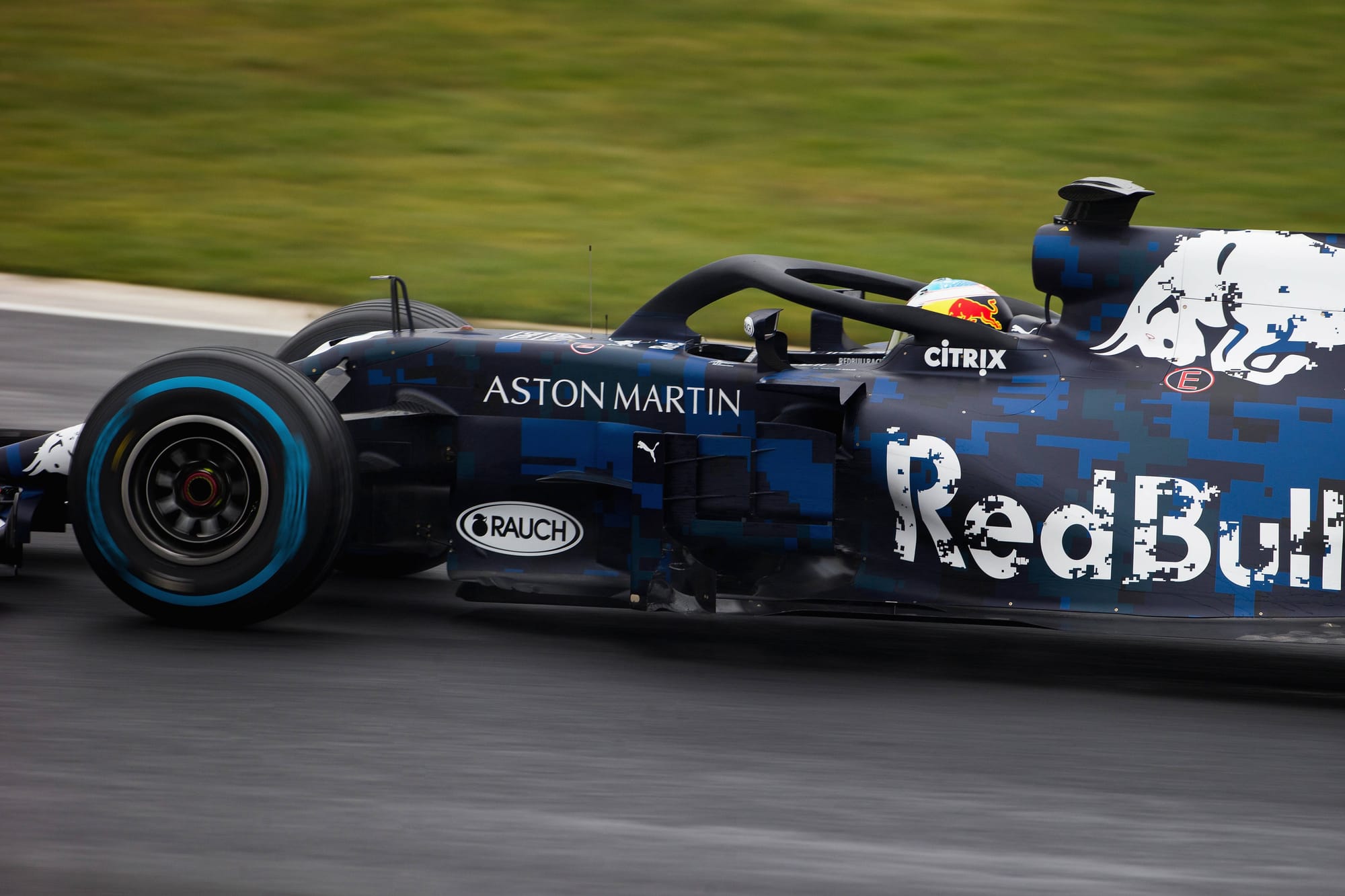
Our 2020 list highlighted the original 'camo Bull', when Red Bull’s 2015 car broke cover at testing in a mock-camouflage livery similar to what you’d expect to see on a prototype road car when it’s pounding round the Nordschleife before release.
Red Bull was happy to play up suggestions that it was an attempt to disguise the car’s secrets during testing, but ultimately this was a clever marketing move to generate some attention.
Team boss Christian Horner promised that people calling for the team to race with the camouflage wouldn’t be disappointed when they saw Red Bull’s definitive 2015 car, but whatever the team supposedly had planned for the season must have been accidentally deleted from its servers.
It repeated the trick with special pre-season liveries in 2018 and '19 that never made it near the grid. It's the mostly blue with cracked lettering 2018 version that got the most praise from The Race's 2025 team, so it nudges the original camouflage design off this list - partly because full camouflage F1 cars now have a bit less novelty value.
The blue BAR
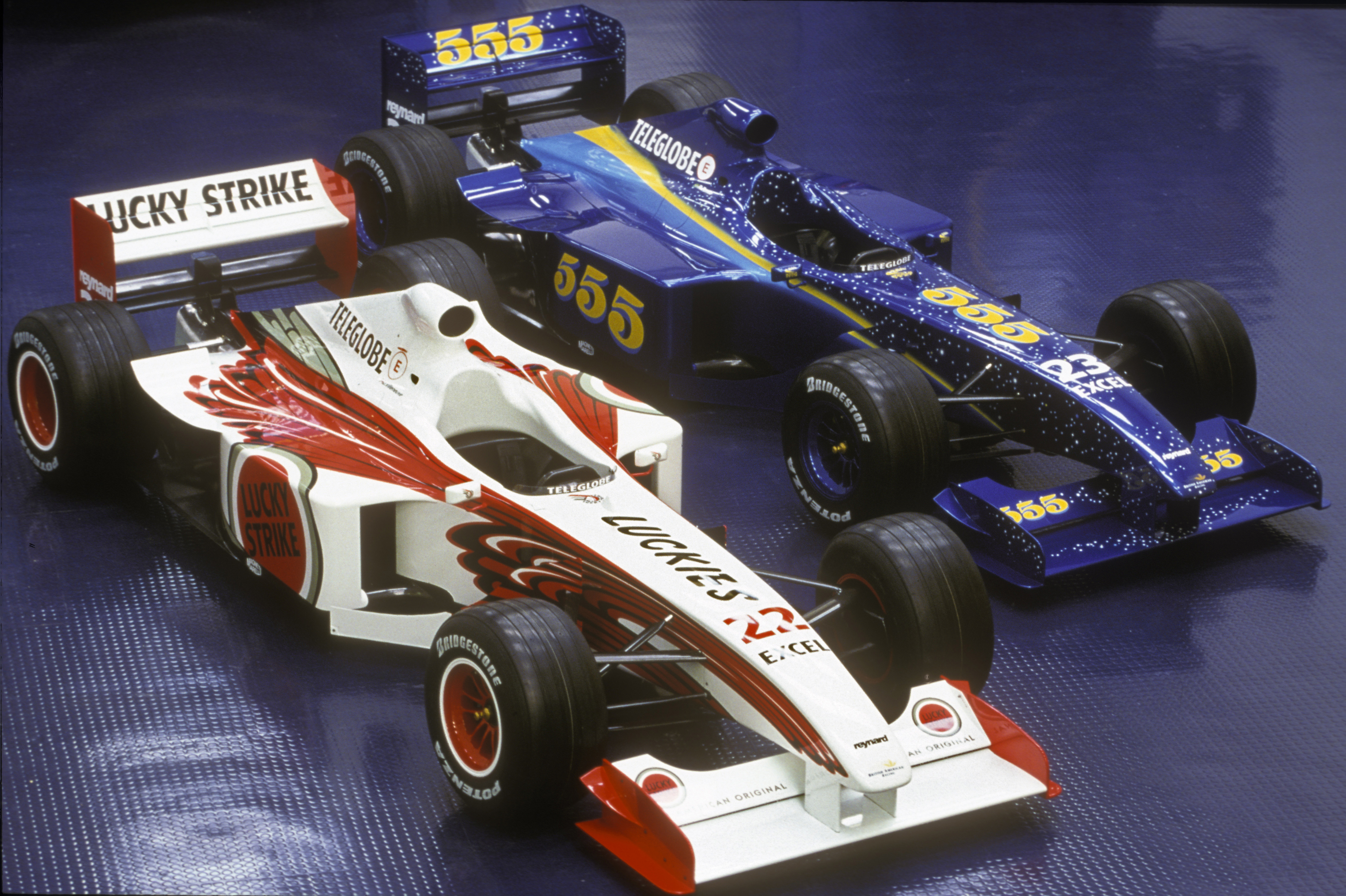
In 1999 BAR made a splash when it launched its first F1 car with two colour schemes, a red and white one for Jacques Villeneuve, and a blue and yellow one for Ricardo Zonta as it attempted to advertise two separate brands from backer British American Tobacco.
The team was blocked from doing that, which led to the infamous ‘zipper’ livery that combined the two designs. So if you attended a grand prix in 1999 and sat on the right-hand side of the circuit, you could be forgiven for thinking the Subaru world rally-inspired design did race in ’99.
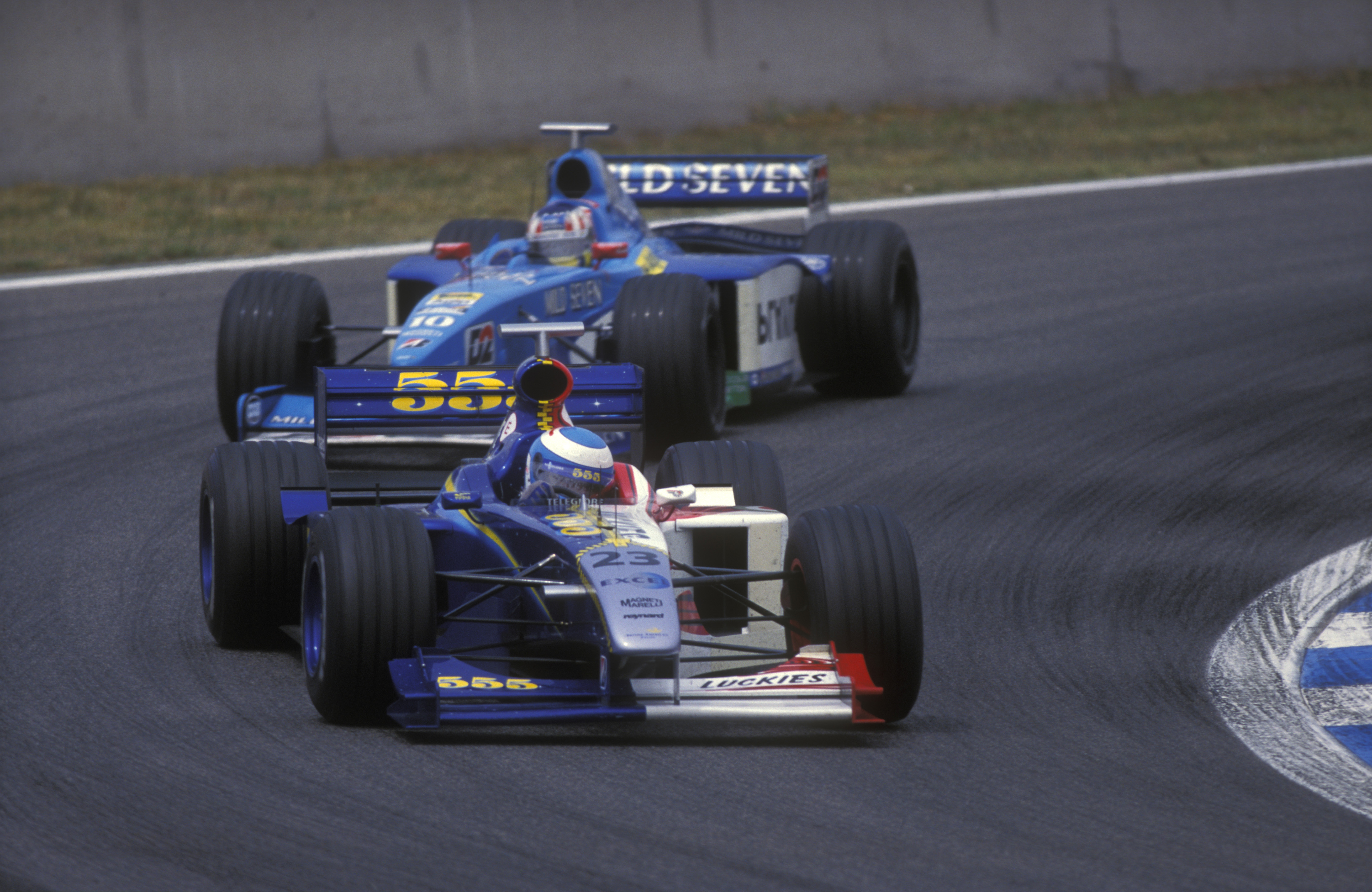
When BAR picked one lead brand to go with in 2000, blue was rarely seen again on its cars. Until F1 made its debut in China in 2004.
BAR and Honda made varying degrees of subtle changes to their standard livery on their race cars from 2004 to 06, but nothing came close to the fully-decked out car Anthony Davidson drove in practice at the 2004 event.
Rules for third cars running in practice were relaxed to allow different liveries to be used, so after a wait of nearly six years, a blue and yellow BAR finally hit the track. Davidson did the one-off colours proud, setting the fastest time of the day.
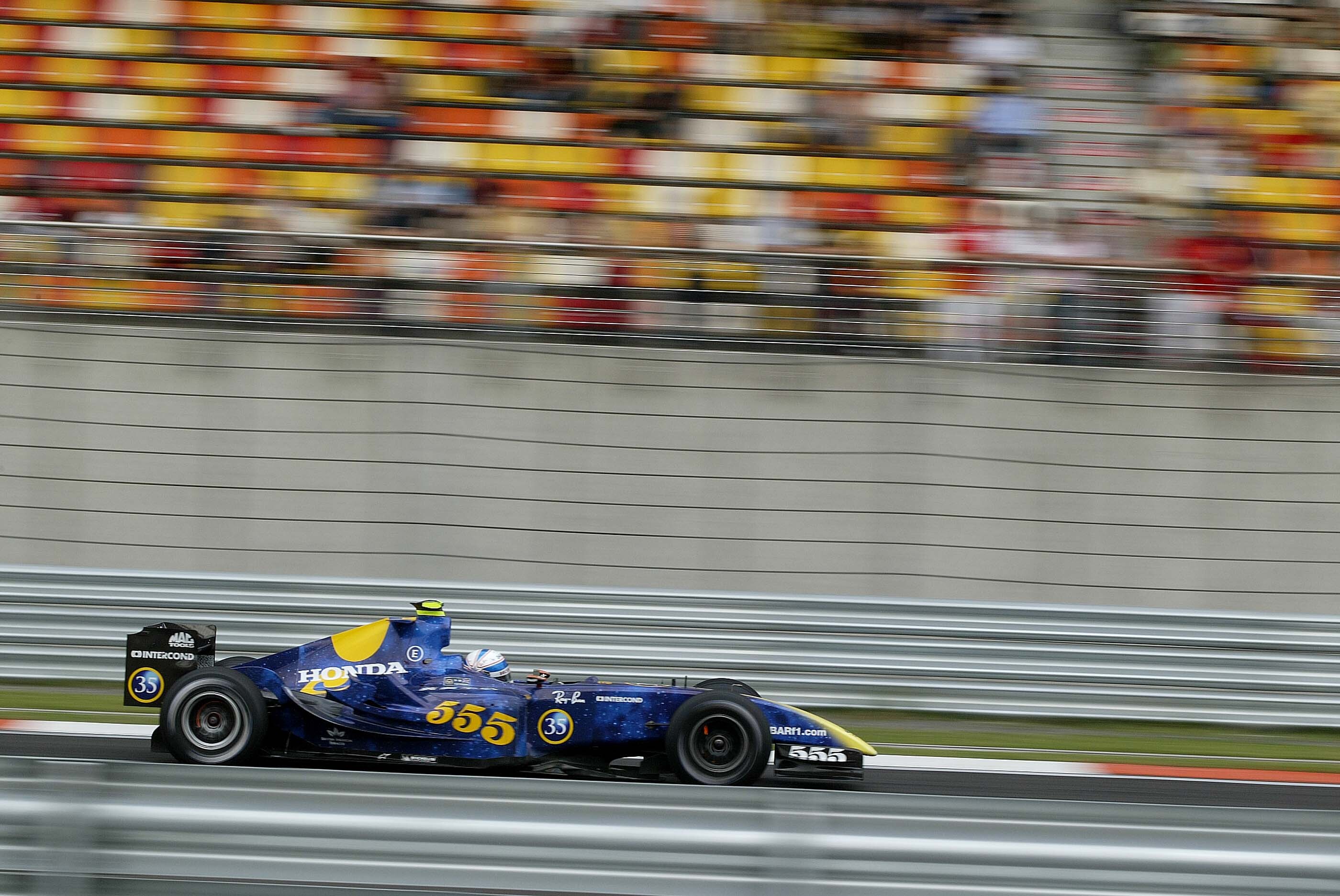
Davidson ran a number of special liveries to promote British American Tobacco brands during his Friday appearances that season. Some of them were, frankly, a mess. But there's a special nod to the version that appeared in Monza practice, which deserved to be on the grid purely because it was F1's second best use of a 'legs cutaway' livery joke after Sonic the Hedgehog's presence on the 1993 Williams.
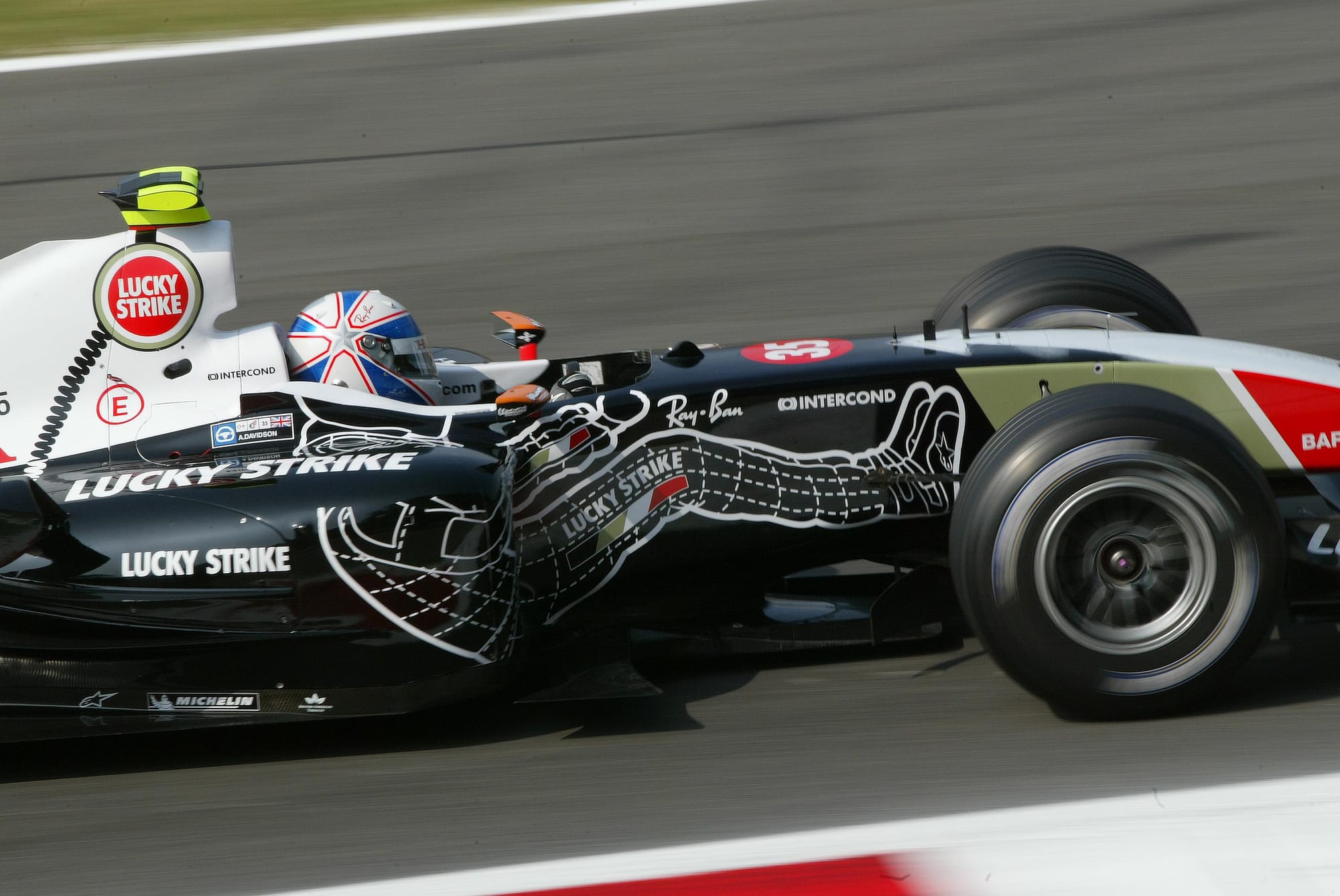
The Valentine's Alfa
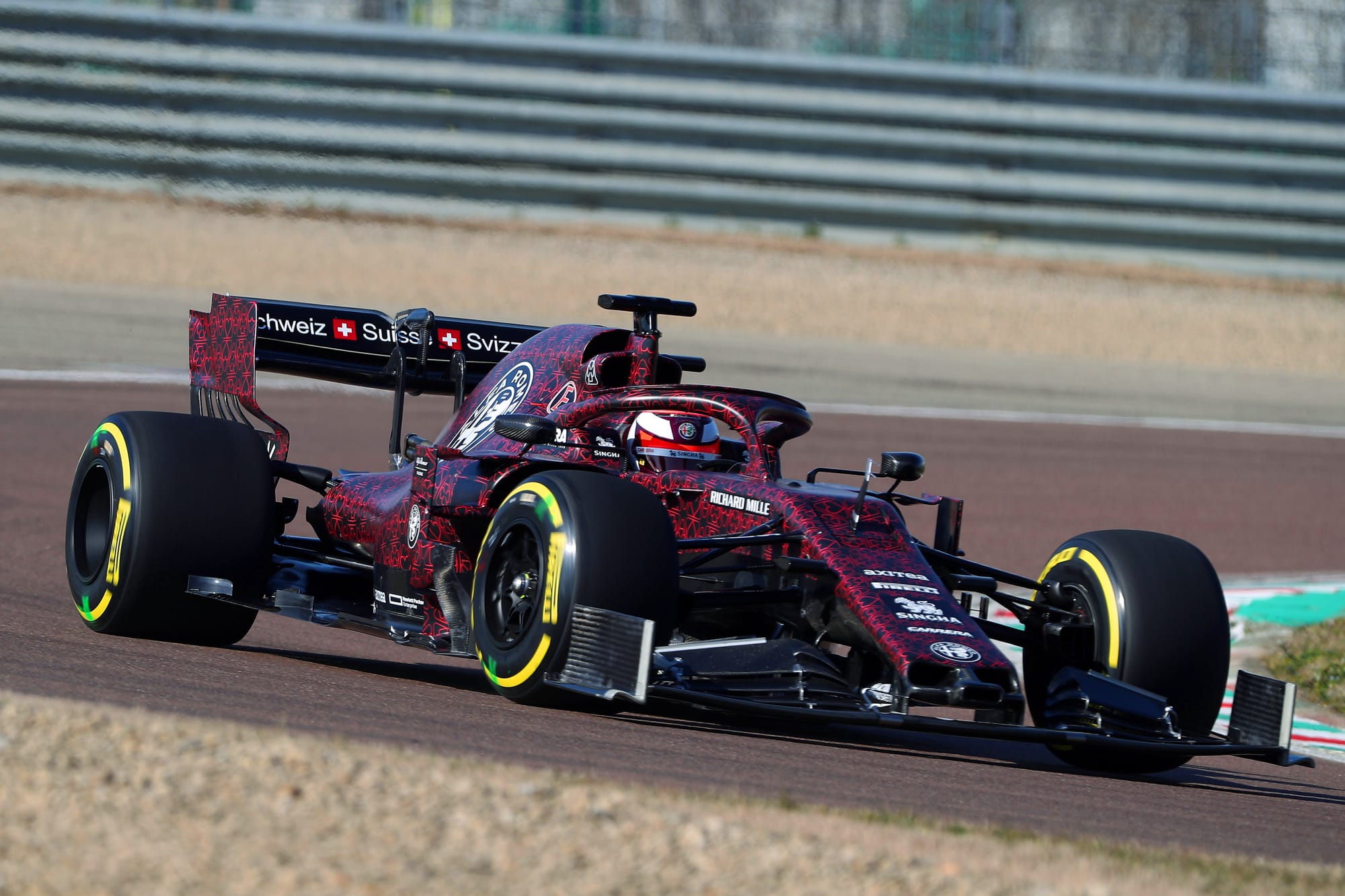
During the Alfa Romeo era, what's now temporarily Sauber again did a neat job in pre-season test liveries, from the 2020 snakeskin to the 2022 full camouflage. It also nipped in to upstage the start of 2023 launch season with a wild 'art car' that actually we're very glad got nowhere near an actual F1 grid.
That wasn't the case with the stunning 'Valentine's camo' used for its 2019 shakedown at Fiorano on February 14 that year. Who would've predicted that of all the possible driver and team combinations, it would be Kimi Raikkonen and Sauber that turned up with a love-heart-scattered F1 car?

